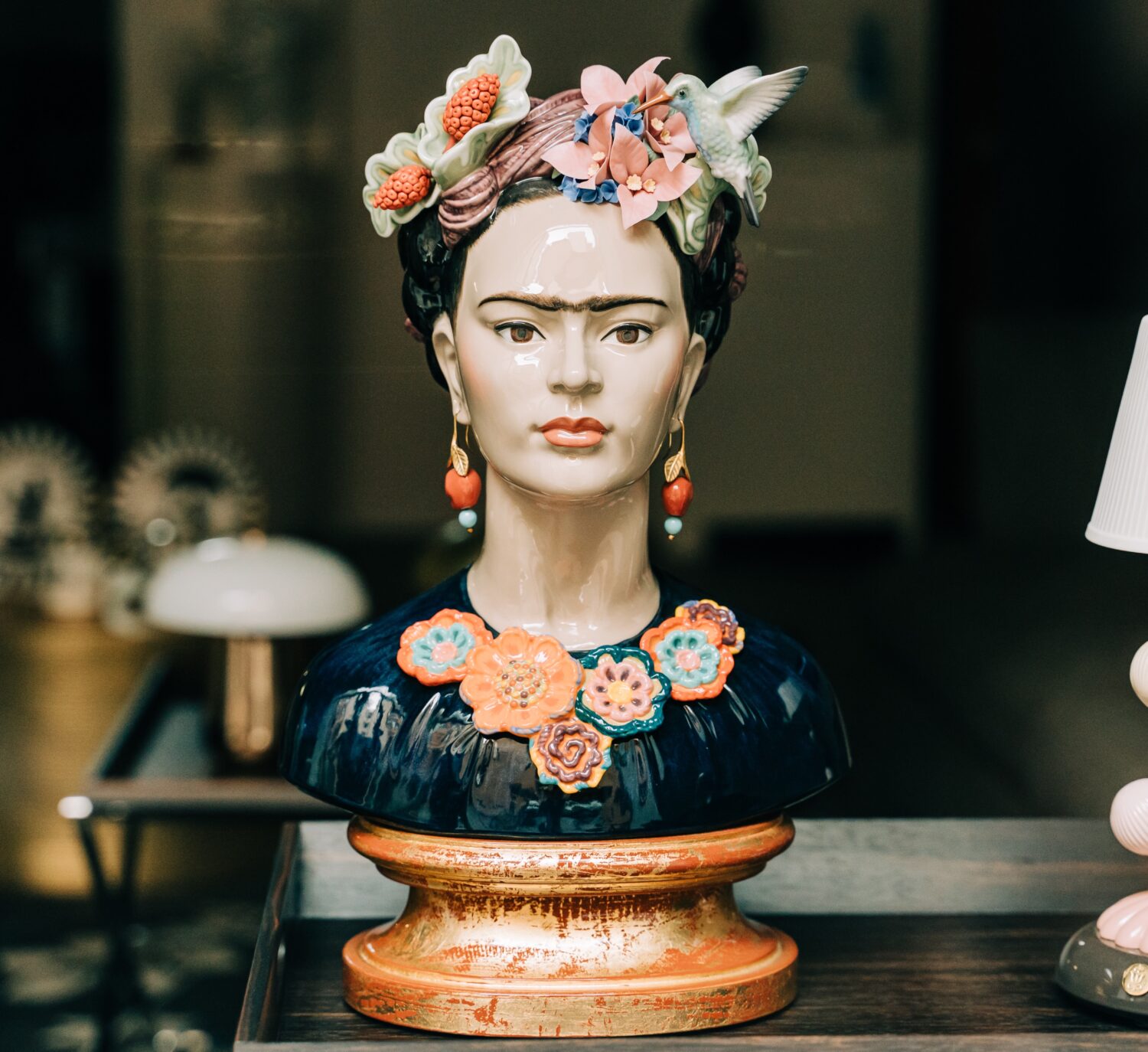Most people might not recall when or how they first encountered Frida Kahlo — yet, she is instantly recognizable. Her image appears on objects ranging from the 500 Mexican peso to earrings, clothing, mugs, phone cases, and posters. Often, in these representations, her braided hair is adorned with vibrant flowers, and she is dressed in a huipil — a traditional garment embroidered with colorful patterns belonging to indigenous groups in Mexico and Central America. Frida Kahlo will emerge whenever Mexico is represented.
Kahlo’s image, both in the world of art and popular culture, has served as a source of empowerment for Latinas and a number of other marginalized identities — including the queer, anti-capitalist, and non-able bodied communities. As the daughter of Oaxacan immigrants, wearing huipiles and jewelry crafted by Indigenous Oaxacan artisans have been ways that I remember and honor my indigenous heritage, despite my distance from Mexican citizenship or formal membership in tribal communities. Kahlo’s active choice to embrace her Mexican — over her European — heritage made her a particular figure of interest to me.
At first glance, Kahlo’s embrace of her intersecting identities, particularly of her Indigenous heritage, might seem contrary to what most consider offensive. After all, she seems to have amplified Indigenous culture through her art — a culture that continues to experience threats of erasure due to enduring effects of White colonization. However, further investigation into her background and contemporary accusations against Kahlo by Indigenous communities tell a different story.
Recently, Kahlo has become a polarizing figure in the conversation about cultural appropriation. While some express profound admiration and reverence for the artist, others passionately argue that Kahlo profited off an exoticized, calculated self-image at the expense of Indigenous people. To some, this accusation may seem like a wrongful application of the concept of cultural appropriation. After all, Kahlo was a citizen of the country from which her clothes originated, and she was immersed in Indigenous culture. Therefore, some claim that she was justified in wanting to embrace her Indigenous roots as a form of self-expression.
Both supporters and critics of Kahlo engage in the wider debate on who can reclaim parts of their heritage and identity — a complex, evolving concept. To better comprehend the grievances of Indigenous Mexican communities, one must examine Kahlo’s genealogy and the way she chose to portray her identity.
Kahlo was the daughter of a German man and a mestiza woman; the term mestiza refers to a person of mixed Spanish and Indigenous descent. Kahlo’s mother held tenuous ties to the Indigenous people of the Isthmus of Tehuantepec, a region in the state of Oaxaca.
Born in Coyoacan, a municipality in Mexico City, Kahlo remained distant from the rural life most Indigenous groups in Mexico led during the 20th century. Given that Kahlo grew up in the city as a mixed White woman, she ultimately benefited from assimilation into colonized, Mexican society. On the other hand, the long standing effects of Spanish colonialism — colorism and racism — continued to pervade unassimilated regions of Mexico, namely its regions with dense Indigenous populations. With regards to race, Kahlo could enjoy the privileges of her White identity and her separation from the quotidian struggles of Indigenous groups in the southern states.
(Self-Portrait with Thorn Necklace and Hummingbird, 1940).
Furthermore, Kahlo’s image as constructed through her self-portraits may appear to some as too much of an appropriation of Indigenous culture to be considered appreciative. Some may take issue with the mythologized and exoticized portrayal of Indigenous culture in her work — as seen through jungle-like imagery present in the art depicting wild vegetation and animals. The accusations against Kahlo are motivated in part by her construction of an exotic image of “indianness.” Moreover, critics argue she sold her image, portraying an identity that was not entirely hers to claim.
The ongoing debates regarding Kahlo and cultural appropriation carry larger implications beyond the Latine community. If Kahlo, a woman of many complex identities, is guilty of cultural appropriation, then those with similar diverse genealogies and upbringings may also be prompted to reexamine the ways they choose to embrace one part of their racial or ethnic identity.
In the case of people like myself — who were born in the United States but come from parents of different national origins — one essential part of keeping one’s heritage from being erased due to assimilation is through its physical form of expression. By wearing one’s traditional cultural clothing, jewelry, or adopting other forms of cultural expression, one is able to give more power to a part of their identity that historically has been suppressed by colonial efforts. In many cases, part of what allows for resistance against White supremacy is one’s ability to embrace and reconnect with historically suppressed parts of their lineage. At the same time, it seems like if we judge who can embrace these parts of their identity based on their existing proximity to it, the effort to revitalize the marginalized aspects of one’s lineage may prove to be more difficult.
While Frida Kahlo’s case appears to be one that is unrelated to the rest of us — for one because we do not share the same level of influence — the debates regarding cultural identity inspire further discussion on the topic of cultural appropriation. Identity is complex and dynamic; part of what makes us human is our ability to express our sense of self and share it with the world. Although the case of Kahlo leaves few concrete answers regarding who can choose to embrace certain parts of their cultural identity, the lesson one should take is a willingness to view their idols through a critical lens. Instead of adopting a dogmatic adoration of Kahlo — and any similar icons — we should be critical and conscious of current discussions. Moreover, we should invite Indigenous people and other marginalized communities into the discourse and comprehensively consider their objections to these powerful figures.



